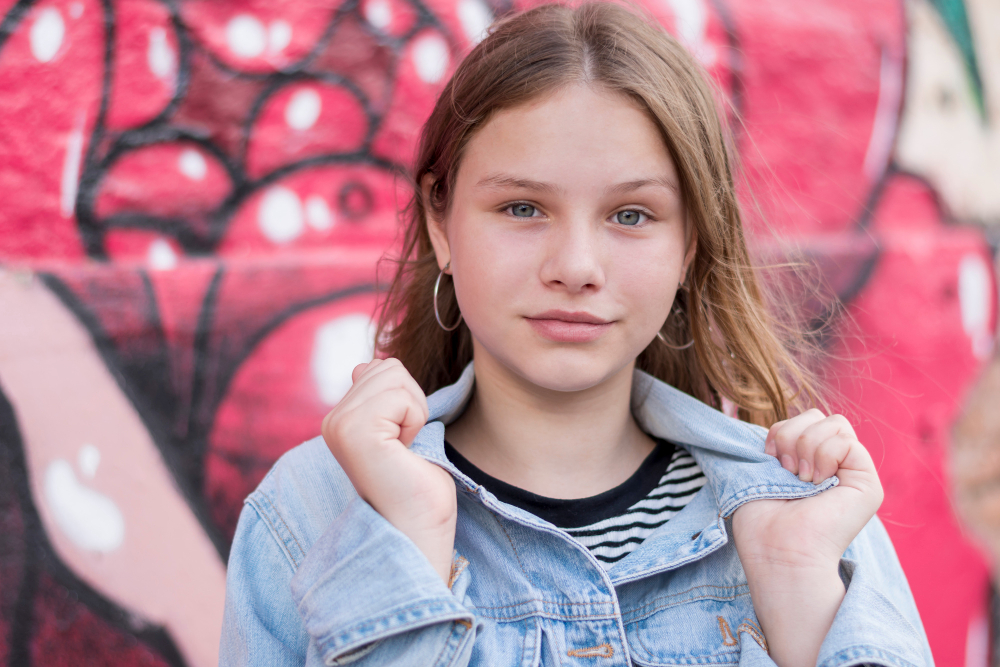They used to be friends—Jeannie and Adam, two children who grew up side by side, navigating the same schoolyards, chaotic birthday parties, playdates, and a sense that their differences were both misunderstood. They went to the reptile show together and settled into the rhythm of primary school routines, and the kind of familiarity shared by children who grow up together.
Containment without care
Adam, who has ADHD, has never received the consistent, attuned support that would allow him to regulate, connect, and flourish in the classroom setting; instead, his days have been punctuated by timeouts and warnings, reactive moments and punishments, none of which have built a meaningful path back into relationship, and all of which have taught him to expect supervision without safety, correction without connection, and consequences without context.
As he grew older—taller, heavier, more visibly uncomfortable in his body, and increasingly excluded from his peer group—the behaviours that once felt manageable were now met with a mixture of avoidance, fatigue, and institutional detachment, as though the very visibility of his struggle made him less eligible for care.
Jean’s slow withdrawal
Jean, placed in a Grade 6/7 split with only a handful of peers her own age and largely removed from her core friend group, initially gravitated toward Adam, whose presence was familiar in a classroom that otherwise felt lonely and unstructured.
What began as continuity quickly turned to dread, as Adam’s humour—which had always walked a line—began to shift into darker and more inappropriate territory, moving from unsettling jokes to explicit and violent ones, including rape jokes, spoken louder and louder in class. She often froze, having to choose whether to stay quiet, which just drove him to speak louder and more embarrassingly, or to laugh along to appease him.
She tried to manage it the way so many high-masking girls do—by staying quiet, by rationalising, by adapting—but the comments grew more disturbing, and the physical intrusions began to follow: his fixation on her smallness, the way he spoke about her body with language that objectified and infantilised her—“twig,” “tiny,” “light”—his habit of pulling her hair, bumping her off shared equipment, knocking over her desk, all of it combining into a pattern she couldn’t name at first but felt in her stomach every morning, in her withdrawal from the spaces she once used, in her skipped breakfasts, in her carsickness, in the anxiety that made learning—especially in math, where she already struggled—feel increasingly out of reach.
The school’s repeated inaction
We spoke to the school, more than once, and the response we received, over and over, was that they were “having meetings with his parents,” a phrase offered like a shield against liability, as if adult conversations behind closed doors, with no visible change and no clear boundaries, should be sufficient to reassure a child that the classroom had become safe again. I also spoke to his mother, who told me about Adam’s loneliness, his sense of being constantly punished, his inability to form sustained connections with peers, his desire for connection, and his discomfort in his growing body—context I understood, even sympathised with, because both children were clearly being failed by the same exhausted, understaffed, under-resourced system that had not prepared itself to hold their needs with dignity.
And still, none of that changed the fact that my daughter no longer felt safe.
The classroom, with 26 students, one teacher, and half-day support, could not meet its own needs, let alone the compounded complexity of two children in distress, and while Jean’s symptoms—her physical withdrawal, her fear, her constant scanning for risk—should have been read as signals of escalating harm; the principal instead chose to reframe them as anxiety, something Jean needed to “work through,” something she would need to “get used to,” even going so far as to say that Jean should learn to stop “reacting pre-emptively,” as though the problem lay not in the repeated, unaddressed violations of her safety, but in the clarity and urgency of her own response to them.
Often when I brought it up, the principal asked about my daughter’s counselling, as if that alone should keep her safe from the child who was more than double her weight and wouldn’t leave her alone.
The 911 call
Adam stepped into her space again—too close, too much, too soon—and Jean, drawing on every fragment of self-protection she still had access to, told him that if he didn’t back off, she would call the police.
He made fun of her and the teacher didn’t intervene, so she did exactly what I had taught her to do when she felt unsafe—she reached for help beyond the walls of a school that had failed her.
She took out her phone, dialled 911, and told the operator what was happening.
And then the principal spoke with the police.
She told the police everything was fine. That there was no emergency. That the school had it under control.
And just like that, they didn’t come.
The right to call for help
I have always told my children that safety is a right—not a privilege, not something to be earned by being polite or by waiting your turn, not something that disappears when it becomes inconvenient for adults—so if something feels unsafe, I’ve told them, whether it comes from a stranger or a friend, a parent or a teacher, you always have the right to call for help, and we will figure it out together afterward.
Jean did what she was raised to do—what every trauma-informed policy claims to support—she set a boundary, made a clear request for protection, and called for backup when no one else would step in, and the school’s response was to override her, to silence her, and to reassert control over the narrative rather than reckon with the reality of what she was experiencing.
She didn’t make a mistake.
The adults did.

The erasure of her reality
I don’t blame Adam—not for the escalation, not for the failure of the adults around him, not for reaching in messy, inappropriate, sometimes frightening ways for connection, because I believe he is also a child in pain, navigating a system that rarely affirms neurodivergent boys until their behaviours become impossible to ignore, and even then responds more with restriction than support.
Also believe, unequivocally, that Jean’s boundaries deserved protection, that her experience of fear and distress was real and cumulative and that by the time she picked up that phone, it wasn’t just about one boy’s behaviour but about a long, slow betrayal by a school that refused to take seriously what she was saying.
What I hold responsible is the adult who was tasked with leading that school—the principal who repeatedly minimised Jean’s concerns, who reframed boundary violations as interpersonal misunderstandings, who described her escalating anxiety not as a consequence of real harm but as a personal hurdle to overcome, and who, in the end, silenced the one action Jean took that finally asserted her own safety in a space where no one else had done so.
Because the principal didn’t just intercept a phone call—she erased a truth.
She couldn’t allow the police to arrive, not because Jean’s fear was exaggerated, but because it wasn’t.
Because if the police had walked into that school, they might have asked the questions no one else wanted to answer: Why did a child feel so unsafe that she called 911 from her classroom? Why had the school allowed the pattern to continue? Why had no adult done what needed to be done weeks, maybe months, earlier?
What she learned
Jean is rebuilding now—not because of the school, but in spite of it—finding ways to self-advocate with her teacher, going to the hallway when the classroom won’t accommodate her needs, trying to re-enter spaces that failed her without being consumed by the fear that they’ll do it again.
That resilience is hers.
It didn’t come from a restorative process. It didn’t come from a staff apology. It didn’t come from institutional repair. It came from her own refusal to disappear.
-
She graduated and this is what she learned
On raising a badass advocate, unintentionally. I didn’t set out to raise an advocate—I set out to raise a child. A child who might feel safe in her body and steady in her breath, who might look out at the world and feel…
What I learned
I learned that empathy, however genuine, does not protect your child—not in a system that defaults to inaction until the harm becomes undeniable, not when care for one child becomes an excuse for the continued endangerment of another. I wanted to believe we could all be held gently in the same system—that understanding Adam’s pain would help the school respond with nuance, that my willingness to see both children clearly would lead to a safer, more thoughtful solution for everyone involved. But it didn’t.
What I learned is that if you don’t fight like hell—early, loudly, and without apology—your child’s rights will not be protected, and your willingness to accommodate complexity will be mistaken for consent.
I started the paperwork for a police protection order six weeks before the school year ended. But after the interview, when I was left to provide a full written account of what had happened, I found myself immobilised. Was I going to give this child a criminal record because our school had failed him?
I don’t know where Adam is now, or how things are unfolding for him in high school. But I hope—sincerely—that he and his family have found steadier ground, and that the system has begun to meet his needs.








